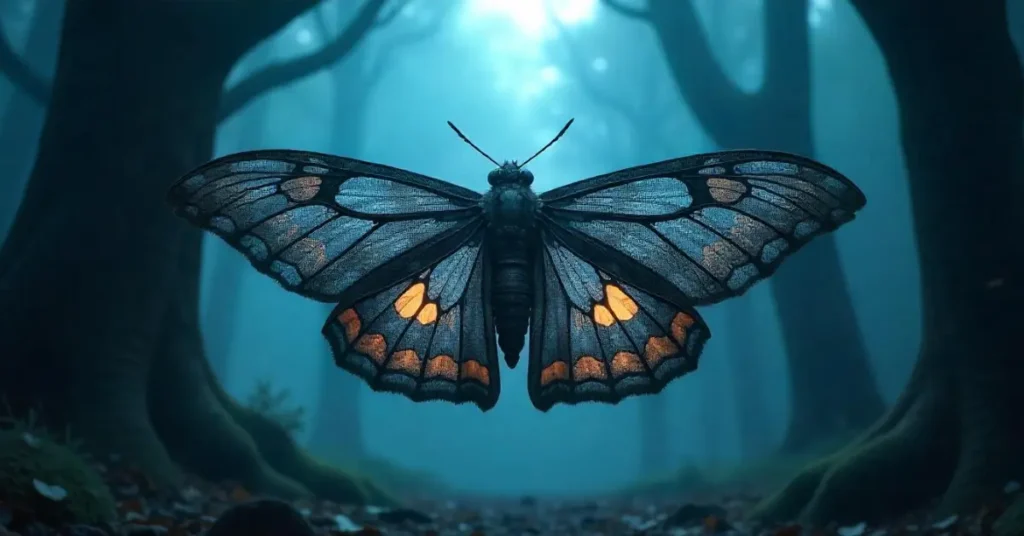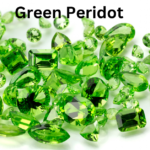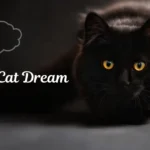In the realm of nature’s enigmatic creatures, few insects captivate the imagination quite like the death moth. Shrouded in mystery and steeped in layers of symbolism, the death moth has been a subject of fascination across various cultures and epochs. This blog post explores the multifaceted meanings attributed to the death moth, delving into its historical background, cultural significance, mythological interpretations, artistic representations, and even its scientific aspects. By examining these diverse perspectives, we can appreciate how this seemingly fragile insect has become a powerful symbol of transformation, mortality, and rebirth.
Table of Contents
ToggleKey Takeaways
- Symbol of Transformation: The death moth, especially the death’s-head hawkmoth, is renowned for its skull-like pattern and serves as a powerful symbol of transformation, illustrating how endings can lead to new beginnings.
- Cycle of Life and Death: It embodies the natural cycle of life, death, and rebirth, reflecting both the inevitability of mortality and the potential for renewal.
- Cultural Interpretations: Across different cultures, the death moth is viewed variably—as a forewarning of death in Western folklore, a guide for the soul in some Native American traditions, or as a reminder of the fleeting nature of life in Eastern philosophies.
- Artistic and Literary Influence: Its enigmatic appearance has inspired countless works in art, literature, and modern media, challenging conventional perceptions of beauty and mortality.
- Personal and Spiritual Growth: The symbolism of the death moth encourages embracing change and personal growth, serving as a metaphor for the inner transformation that follows periods of darkness or loss.
What Is a Death Moth?
The term “death moth” is often used interchangeably with the “death’s-head hawkmoth” (Acherontia atropos), a species renowned not only for its striking appearance but also for its rich tapestry of symbolic associations. Recognizable by the distinctive skull-like pattern on its thorax, this moth’s eerie visage has led many to associate it with themes of mortality and the afterlife.
Physical Characteristics and Behavior
The death’s-head hawkmoth typically boasts a wingspan of 4.5 to 6 inches, with large, powerful wings that display intricate patterns in shades of brown, cream, and black. Its most notable feature, however, is the vaguely human-like skull pattern that appears on its dorsal thorax. This striking mark has fueled both superstition and artistic fascination for centuries.
Biologically, the death moth is a marvel of natural adaptation. As a nocturnal species, it employs its muted colors and cryptic patterns as camouflage during the day, while its active nocturnal behavior helps it evade many predators. Furthermore, its rapid and agile flight enables it to hover near flowers, facilitating pollination—a vital role in the ecosystem that often goes unnoticed amid the more sensational legends associated with it.
The Origin of the Name
The ominous name “death’s-head” is a relatively modern interpretation, arising from Western folklore and artistic imagination. Historically, many cultures interpreted the moth’s skull-like pattern as an omen or symbol of impending death, although some traditions also view it as a harbinger of transformation and renewal. This duality in interpretation is a recurring theme in the symbolism of the death moth.
Historical and Cultural Background
Throughout history, the death moth has been interwoven with various cultural narratives, often reflecting broader human concerns with death, decay, and rebirth. Ancient texts, folklore, and even modern literature have all found inspiration in this enigmatic creature.
Ancient Beliefs and Folklore
In ancient Egypt, for example, the cycle of life and death was a central theme in their religious practices. While the death moth itself was not a primary symbol, its association with transformation resonated with the Egyptian belief in resurrection and the eternal journey of the soul. Similarly, in European folklore, sightings of the death’s-head hawkmoth were sometimes interpreted as forewarnings of doom or as messengers from the spirit world.
One of the most fascinating aspects of the death moth’s historical narrative is the tension between its reputation as an omen of death and its role as a symbol of metamorphosis. This dichotomy reflects an ancient understanding that death is not an end but rather a necessary step towards transformation—a perspective that resonates with many modern spiritual and philosophical viewpoints.
Cross-Cultural Symbolism
Across cultures, the death moth has been imbued with a range of meanings. In some African traditions, moths are seen as souls in transition, guiding the living toward a deeper understanding of mortality. In contrast, certain East Asian beliefs celebrate the moth’s ephemeral beauty as a reminder to cherish the fleeting nature of life. Despite these differences, a common thread emerges: the death moth is universally seen as a symbol of the delicate balance between life and death, light and darkness, decay and renewal.
Literature and Folklore
The moth’s mysterious nature has inspired countless writers, poets, and artists. Gothic literature and horror films have particularly embraced the death moth as an icon of the macabre, often using it to evoke an atmosphere of dread and impending doom. Yet, even within these darker narratives, the underlying message frequently points toward the inevitability of change and the potential for transformation in the face of death.

Symbolic Meaning of the Death Moth
The symbolism of the death moth is as complex and multifaceted as the creature itself. Its image has evolved from a mere harbinger of death to a profound emblem of transformation, metamorphosis, and even spiritual awakening.
Death as Transformation
At its core, the death moth is a powerful reminder that death is an inherent part of the cycle of life. The metamorphosis of a caterpillar into a moth—a process marked by profound physical and symbolic change—mirrors the human journey from birth to death, and ultimately, to rebirth. In this light, the death moth serves as a metaphor for transformation, symbolizing the idea that endings are not final but are often precursors to new beginnings.
This symbolism is particularly resonant in modern philosophical discourse, where the acceptance of mortality is seen as a pathway to personal growth and self-awareness. By confronting the inevitability of death, individuals may find the courage to embrace change and pursue a deeper understanding of their own existence.
Duality of Life and Death
The death moth embodies a striking duality—its very appearance juxtaposes beauty with decay, life with death. The delicate, almost ethereal quality of its wings contrasts sharply with the stark, grim imagery of the skull-like pattern, reminding us that beauty and terror often coexist in the natural world.
This duality can be interpreted as a reflection of the human condition. Just as the moth’s life is a brief but vibrant interlude between birth and death, human existence is characterized by moments of profound beauty interwoven with inevitable loss. In this way, the death moth encourages us to see the fullness of life, acknowledging that every ending holds within it the seeds of new beginnings.
A Symbol of Rebellion and the Unconventional
In recent decades, the death moth has also become a symbol embraced by subcultures and artistic communities. Its macabre yet captivating image speaks to those who reject mainstream ideals of beauty and conformity. For many, the death moth represents the courage to explore the darker aspects of life, to question societal norms, and to find meaning in the shadows.
Artists and musicians, in particular, have been drawn to the death moth for its inherent contradiction—the simultaneous allure of life and the inevitability of death. This has led to its frequent appearance in album covers, tattoos, and other forms of creative expression, where it is celebrated as a symbol of individualism and the transformative power of embracing one’s inner darkness.
Mythological and Spiritual Interpretations
Beyond its physical and cultural attributes, the death moth occupies a significant place in mythological and spiritual traditions around the world. Its image is imbued with layers of meaning that transcend the literal and invite deeper contemplation.
The Death Moth in Mythology
Mythological accounts often portray the death moth as a liminal creature—existing in the space between life and death, light and darkness. In Greek mythology, for instance, the concept of chthonic deities (gods associated with the underworld) shares common ground with the themes evoked by the death moth. Although not explicitly mentioned in ancient texts, the symbolic parallels are clear: just as these deities preside over the mysteries of death and rebirth, so too does the death moth serve as a reminder of the cyclical nature of existence.
In some Native American traditions, moths are seen as spiritual messengers, guiding souls on their journey to the afterlife. This perspective reinforces the idea that the death moth is not an omen to be feared but a guide that offers insight into the eternal cycle of transformation.
Spiritual Awakening and the Dark Night of the Soul
The concept of spiritual rebirth often involves a “dark night of the soul”—a period of profound inner turmoil that precedes a new phase of enlightenment. The death moth, with its striking contrast of beauty and decay, can be seen as a metaphor for this transformative experience. In this interpretation, the moth’s appearance signals the end of one phase of life and the beginning of another, urging individuals to embrace the uncertainty of change and to find strength in vulnerability.
This spiritual interpretation is echoed in many modern self-help and mindfulness practices. By recognizing the inevitability of change and the transient nature of life, individuals are encouraged to let go of old patterns and to welcome the new. The death moth, then, becomes a symbol of personal growth—a reminder that every end paves the way for a fresh start.
Rituals and Ceremonies
In various cultures, rituals and ceremonies have been developed around the symbolism of moths and other nocturnal creatures. These practices often aim to honor the cycle of life and death, acknowledging the interconnectedness of all things. While the death moth itself may not be the central figure in many of these rituals, its image frequently appears as a potent emblem of transformation and rebirth.
For example, in certain shamanic traditions, the appearance of a death moth during a ritual might be interpreted as a sign that the veil between the physical and spiritual worlds is thinning—a moment of profound significance that calls for introspection and renewal.
Death Moth in Art and Literature
The intersection of art and symbolism provides another rich vein for exploring the meaning of the death moth. Over the centuries, its image has been immortalized in paintings, literature, and even contemporary media, each interpretation adding new layers to its mystique.
Literary References and Symbolism
From Gothic novels to modern poetry, the death moth has often been used as a metaphor for the transient nature of beauty and life. Writers have long been fascinated by the paradox of an insect that embodies both fragility and the inevitability of death. In literature, the death moth frequently appears as a harbinger of doom or as a symbol of internal transformation. It serves as a poignant reminder that what we perceive as dark or ominous can also be a source of profound insight and change.
Notable authors have drawn parallels between the moth’s metamorphosis and the human condition. The delicate process of emerging from a cocoon, only to face the uncertainties of the world, mirrors the journey of self-discovery and the courage required to embrace life’s impermanence. Such literary uses of the death moth not only enrich the narrative but also invite readers to reflect on their own experiences of loss, change, and rebirth.
Visual Arts and the Aesthetics of Decay
In the visual arts, the death moth has served as a compelling subject for painters, sculptors, and tattoo artists alike. Its intricate patterns and haunting appearance have made it a favorite motif in styles ranging from Victorian Gothic to modern surrealism. The moth’s duality—the stark juxtaposition of life’s beauty with the inevitability of decay—resonates with artists who seek to capture the fleeting nature of existence.
Artists often use the image of the death moth to challenge conventional notions of beauty. By highlighting the interplay between light and shadow, life and death, they invite viewers to reconsider their relationship with mortality. In this way, the death moth transcends its literal existence and becomes a powerful symbol of resilience and transformation.
Pop Culture and Modern Media
In contemporary culture, the death moth has found a new audience through film, music, and digital art. Its appearance in horror films and music videos has cemented its status as an icon of the macabre, while at the same time, it has been embraced by alternative subcultures as a symbol of nonconformity and self-empowerment.
For instance, numerous bands and artists have incorporated the death moth into their visual identities, using its imagery to evoke themes of rebirth and the subversion of traditional ideals. This modern reinterpretation underscores the moth’s enduring appeal and its ability to inspire new generations to explore the deeper meanings hidden within nature’s most mysterious creatures.
Scientific Perspectives on Moths and Death’s Symbolism
While the symbolic interpretations of the death moth are rich and varied, it is also important to appreciate the scientific marvels that underlie its existence. Understanding the biology of moths not only deepens our respect for these creatures but also highlights the natural processes that have given rise to their symbolic power.
The Biology of Metamorphosis
Moths, including the death’s-head hawkmoth, undergo one of nature’s most remarkable transformations: metamorphosis. This process, which takes a caterpillar from a voracious feeder to a delicate, winged adult, is a vivid illustration of change and regeneration. The transformation involves several stages—egg, larva, pupa, and adult—each marked by significant physical and biochemical changes.
This metamorphic journey is not merely a biological process; it is a powerful allegory for growth and renewal. The death moth, emerging from a period of vulnerability as a pupa, symbolizes the idea that true transformation often requires a period of introspection, sacrifice, and eventual rebirth. This biological reality lends credence to the symbolic interpretations that view the death moth as an emblem of hope amid life’s inevitable cycles of decline and renewal.
Evolutionary Significance
From an evolutionary perspective, the death moth is a testament to nature’s ability to adapt and thrive in diverse environments. Its nocturnal habits, specialized feeding behaviors, and intricate camouflage are all adaptations that have ensured its survival over millennia. These evolutionary traits, developed over countless generations, underscore the resilience and adaptability of life—a theme that resonates deeply with the symbolic narrative of transformation.
The evolutionary success of moths, despite their often short lifespans and vulnerability to predators, highlights a broader truth about life itself: that beauty and strength are often found in the most unexpected places. This scientific insight adds a layer of depth to the symbolic meaning of the death moth, encouraging us to look beyond appearances and appreciate the intricate processes that sustain life.
The Intersection of Science and Symbolism
The study of moths bridges the gap between empirical science and the realm of symbolism. While scientists analyze the death moth’s anatomy, genetics, and ecological role, cultural interpretations imbue these observations with deeper meaning. This intersection is particularly valuable in today’s world, where understanding the natural world requires both rigorous scientific inquiry and an appreciation for the symbolic narratives that help us interpret our experiences.
For many, the death moth is a reminder that every scientific discovery carries with it a poetic dimension—a recognition that the beauty of life lies not only in its observable phenomena but also in the stories and symbols that enrich our understanding of existence.
Personal Reflections and Modern Interpretations
In our fast-paced, ever-changing world, the symbolism of the death moth offers a timeless message of hope and transformation. For those grappling with personal loss, change, or the existential questions of life, the death moth can serve as a source of comfort and inspiration.
Embracing the Inevitable
One of the most compelling lessons derived from the death moth’s symbolism is the importance of accepting life’s impermanence. In a society that often seeks to deny or avoid discussions of mortality, the death moth challenges us to face the reality of change head-on. By embracing the inevitability of endings, we create space for new beginnings, personal growth, and a deeper appreciation of the present moment.
This perspective is especially relevant in modern psychological and self-help literature, where the process of letting go is seen as a critical step toward achieving emotional resilience. Whether it is the end of a relationship, the loss of a loved one, or a significant life transition, the death moth reminds us that each ending is intertwined with the potential for rebirth and renewal.
A Catalyst for Creativity
For many creatives, the dark yet enchanting image of the death moth is a catalyst for artistic expression. Its paradoxical nature—beautiful yet foreboding, delicate yet resilient—provides fertile ground for exploring themes of duality, transformation, and the interplay between light and darkness. Writers, visual artists, and musicians alike have drawn on the symbolism of the death moth to articulate their innermost fears and aspirations, transforming personal pain into works of art that resonate with a wider audience.
In this sense, the death moth is not merely a symbol of death, but rather a beacon of creative energy. It encourages us to look beyond the surface and to find beauty in the most challenging aspects of our lives. By embracing our own vulnerabilities, we can channel our experiences into meaningful expressions that inspire both ourselves and others.
Modern Spiritual Practices
In the realm of modern spirituality, the death moth has been reinterpreted as a symbol of transformation and self-empowerment. Many contemporary spiritual practices encourage individuals to confront their fears—especially the fear of death—as a pathway to enlightenment. Meditation, mindfulness, and rituals that honor the cycles of life and death often draw on the imagery of metamorphosis, with the death moth serving as a potent emblem of the journey toward inner peace.
This modern interpretation resonates particularly with those who are navigating periods of significant change. Whether it is a career shift, a personal loss, or a spiritual awakening, the death moth’s message is clear: transformation is a natural and necessary part of the human experience, and every ending holds the promise of a new beginning.
Death Moth and Transformation in a Broader Context
Beyond its individual symbolism, the death moth invites us to consider broader themes of transformation in the natural world and in human society.
Environmental Reflections
In an era marked by rapid environmental change and ecological uncertainty, the death moth can also be seen as a symbol of nature’s resilience. Moths and other insects play crucial roles in maintaining ecological balance, acting as pollinators, decomposers, and a food source for other wildlife. Their survival, despite the many challenges posed by habitat loss and climate change, serves as a powerful reminder of the enduring cycles of life and renewal.
The death moth’s ability to adapt and thrive in diverse environments encourages us to consider the interconnectedness of all living things. Its symbolism transcends mere superstition, offering a lens through which we can appreciate the intricate balance between creation and decay—a balance that is fundamental not only to nature, but also to our own lives.
Social and Psychological Metamorphosis
On a societal level, the symbolism of the death moth can also be extended to the concept of metamorphosis in the human psyche. Societal progress often involves periods of crisis and transformation, where old paradigms are shed in favor of new ways of thinking. Much like the moth emerging from its cocoon, communities and individuals undergo transformative processes that, while challenging, ultimately lead to growth and renewal.
Psychologists and social theorists have long drawn parallels between the processes of individual change and larger societal shifts. The death moth’s metamorphosis is a metaphor for these transformative experiences, urging us to view life’s upheavals not as failures or endings, but as essential steps on the path to evolution—both personal and collective.
Conclusion
The death moth stands as a powerful symbol—a reminder that life’s beauty is often intertwined with its fragility. Its legacy, whether viewed through the lens of ancient mythology, modern art, or scientific inquiry, is a celebration of transformation and resilience. In acknowledging the cycles of change that define our existence, we learn to appreciate that every ending carries the promise of a new beginning.
As you reflect on the symbolism of the death moth, consider how its message might resonate with your own life experiences. Embrace the lessons of transformation, and remember that in every moment of darkness, there lies the potential for renewal and rebirth. The death moth, with its mysterious allure and profound symbolism, continues to inspire us to see the world—and ourselves—in a new light.
FAQs
What is a death moth?
The death moth commonly refers to the death’s-head hawkmoth (Acherontia atropos), known for its distinctive skull-like pattern and nocturnal habits.
What does the death moth symbolize?
It embodies transformation, rebirth, and the delicate balance between life and death, reminding us that every ending can lead to a new beginning.
How is the death moth perceived across different cultures?
Across cultures, it is seen both as an omen of death and a symbol of metamorphosis, reflecting themes of mortality, spiritual guidance, and the cycle of renewal.
In what ways is the death moth represented in art and literature?
Artists and writers use the moth’s eerie yet beautiful image to explore themes of change, vulnerability, and the transient nature of life, often highlighting its dual symbolism.
How does the death moth relate to modern spiritual practices?
Many modern spiritual and mindfulness practices view the death moth as a metaphor for embracing change, personal growth, and finding hope amid life’s inevitable transitions.
I’m Bia Shazz, a numerologist and dream interpreter specializing in angel numbers and dream analysis. I help decode divine messages and subconscious insights to guide you on your spiritual journey.







